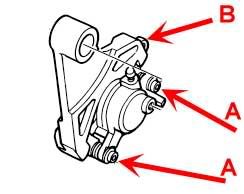CHRIS_D
Well-known member
Hey OCfjr,IIRC, $30 for Stainless steel, $20 for mild steel, plus shipping. Expect around $7.50 for shipping due to weight and size.Don't know, Don. I procratinated too long to get one ordered in time for my North Florida ride. That's why I opted for my modified version.Pardon a dumb question, but I'm Irish so I'll go right ahead! RH, how expensive are "aftermarket torque arms" Eric refers to?
Here's the link to Catfish's site Eric gave me. farklemasters.com.
EDIT - FWIW, ordering a foot of stainless steel online from the link in the Darkside FAQ costs about $12 shipped, (shipping being the same cost, the steel is cheap). For the non-drill press owners, Farklemasters is the way to go and a pretty good price.
I can't find this part on Farklemaster's site? Would you have a link?
Thanks!























































